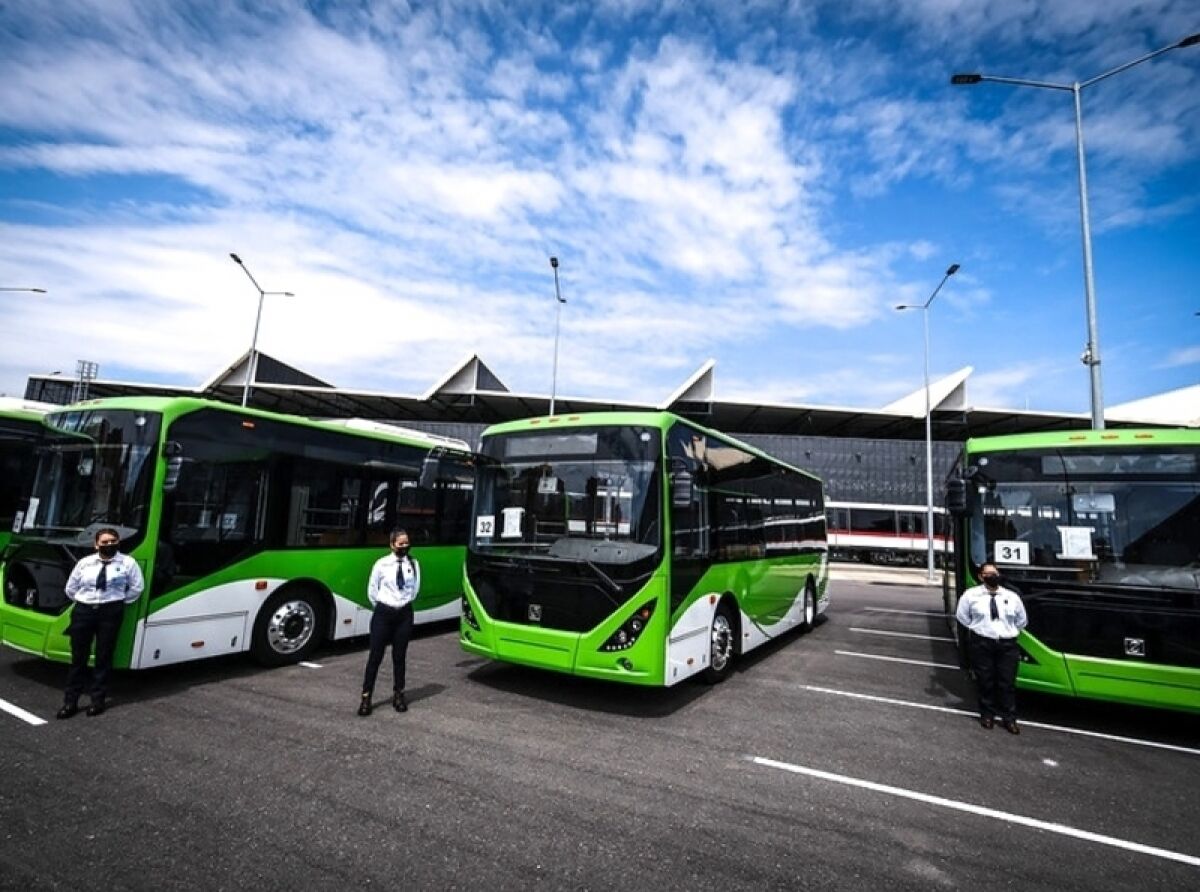In order to expand public transport options in the city of Guadalajara, improve the quality of the provision of this service, and comply with the State's environmental agenda and the commitments made in the Paris Agreement against climate change, the Governor of Jalisco Enrique Alfaro Ramírez presented this Tuesday a fleet of fully electric buses.
This completes the first fleet of units with these characteristics in all of Mexico, and includes 38 buses and representing an investment of 300 million pesos.
Mi Transporte Eléctrico, the name that will be used by the new fleet, is part of the Integrated Mobility Model in the Guadalajara Metropolitan Area. This also includes lines 1, 2 and 3 of Mi Tren, units of Mi Transporte, Mi Macro Calzada, soon to be Mi Macro Periférico and the public bicycle system MiBici.
After inspecting the new electric buses, Governor Enrique Alfaro reiterated that the logic with which the city's public transport system will be viewed will go from a visualization of business and particular interests to a scheme of quality in service and friendly treatment of users.
“The reconstruction of the transport model goes through a series of steps that we have been taking with a lot of effort, a lot of work, and we are already very close to that objective which is to convert to public transport. That is the great effort that has been made by the Ministry of Transportation,” said the Governor.
For its start, the president specified, the fleet will cover the route from the Periférico Norte station of Line 1 of My Train to the University Center of Tonalá, and, in the coming weeks, a second route will be extended until it reaches the International Airport of Guadalajara.
The insecurity and marginalization that prevail in these northern municipal limits of Guadalajara and Tonalá are the result of many years of postponing urban planning, infrastructure, and public services. Therefore, the main objective of the electromobility route is to substantively renew mobility in the area by improving the connectivity of neighborhoods in marginalized conditions.
These units will enter into circulation once they comply with all the technical and administrative processes. It is estimated that they will come into operation in an approximate period of two weeks on the first route, and the details of the start of the route will be informed to the population.
Another innovative aspect of the system is that it will be operated mainly by women, who have already been trained and are ready to begin.
The Secretary of Transportation, Diego Monraz Villaseñor, commented that with the support of the electric route operating in the city, it is intended to reduce 4,000 tons of carbon dioxide in a first stage. Later the projection is to grow the public transport routes composed of only electrical units.
“Within the My Transport program, which has already passed almost all the stages, we are now beginning a very important one, which is the commitment to this climate change agenda. The two routes of the new electric route will initially move around 15,000 users, reaching more than 20,000 with the route consolidated and with the reactivation of students in schools as well,” the secretary stressed.
Rolando Valle Favela, director of SITEUR, commented that the women who will operate the electric route, who have received training in theory and practice, have already been hired. He added that SITEUR's experience will now be enriched with bus operation, broadening the perspective of service and quality.
Gabriela Canales, Director of Metropolitan Development Management of the Guadalajara Metropolitan Area, highlighted that the electric route was also possible due to the link made by IMEPLAN in 2018 with the C40 City Network, the German Agency for International Cooperation, and the British Embassy in Mexico.
My Electric Transportation is aligned with the objectives of the Metropolitan Climate Action Plan and the State Program of Action against Climate Change. Its implementation contributes to the mitigation route towards 2050 of zero net greenhouse gas emissions through the strategy to implement an integrated, efficient and quality metropolitan transportation system, by increasing the infrastructure for mass and non-motorized mobility.
It also contributes to the 2030 goal of renovating 100% of public transport units with low-emission technology operating under new, more efficient user service schemes. The emission reduction calculation with Mi Transporte Eléctrico is 4,000 tons per year of CO2 equivalent to one ton of PM10 and 39 tons of Nox.
These Sunwin brand buses have a capacity of 58 passengers and are 8.6 meters long, and arrived at the port of Manzanillo from Shanghai, China. The units have universal accessibility, as well as a battery-powered electric motor. These types of units are already used in countries such as Pakistan, Taiwan, Saudi Arabia, Dubai, Colombia and in 16 cities in China, their country of origin.

